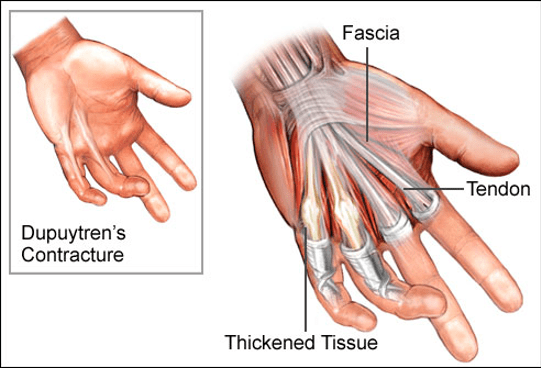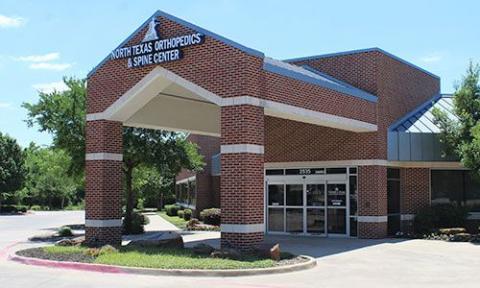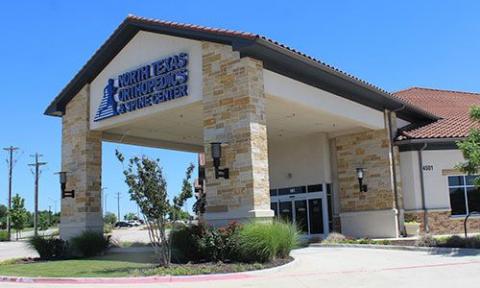Dupuytren’s contracture is a progressive condition affecting the palm’s fascia, causing the tissue to thicken and form nodules that eventually develop into cord-like bands. These cords gradually pull one or more fingers toward the palm, making it impossible to fully straighten them, with the ring and little fingers most commonly affected. The condition primarily affects men over 40 of Northern European descent and has a hereditary component, though its exact cause remains unknown. While initially presenting as painless lumps in the palm, the condition typically progresses slowly over years, leading to significant hand function impairment that can complicate everyday activities like putting on gloves or shaking hands.


The fascia of the palm is a layer of tissue that helps anchor and stabilize the skin of the palm. Patients with Dupuytren’s have fascia that thickens and tightens, which pulls the fingers into a flexed or bent position. This is usually genetic, and can often be traced through a family lineage. It is more common in Northern European males, but can be seen in any ethnicity.
Typically, the diagnosis of Dupuytren’s contracture can be made in the office by your provider. Xrays and MRI are not usually necessary.
Nonsurgical Treatment
Surgical Treatment
If your symptoms do not respond to the above non-operative treatments, surgery remains an option. Dr. Fleager will perform what is called a fasciectomy to remove the abnormal tissue and cords in order to improve range of motion and function of the finger. Either a small section of the cord, or the entire cord, can be removed. This is a day surgery that allows you to return home the same day.
It is important to remember, that no matter what treatment you pursue, there is a good chance that the Dupuytrens will recur sometime in your life. I understand that this is very frustrating for patients, but this is the unfortunate nature of the disease.
See why our patients love our physicians, quality of care, and amazing results.
*Based on Independent Market Research


North Texas Orthopedics will be closed on December 25 in observance of the holidays. Wishing you a joyful season!